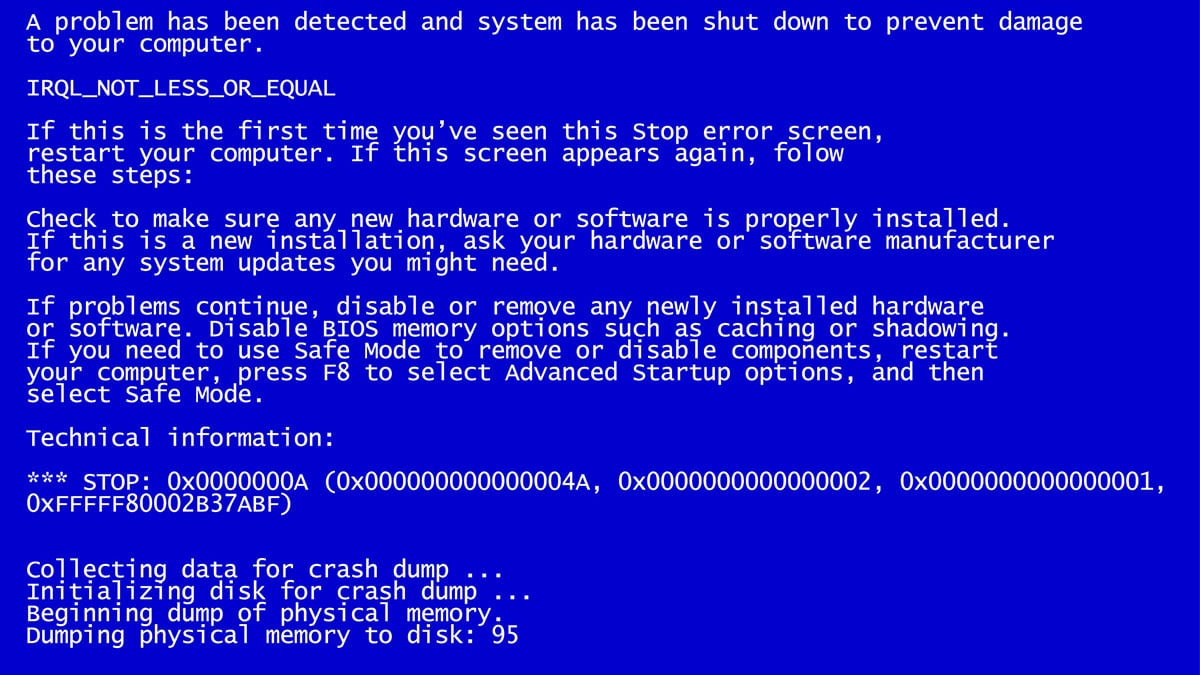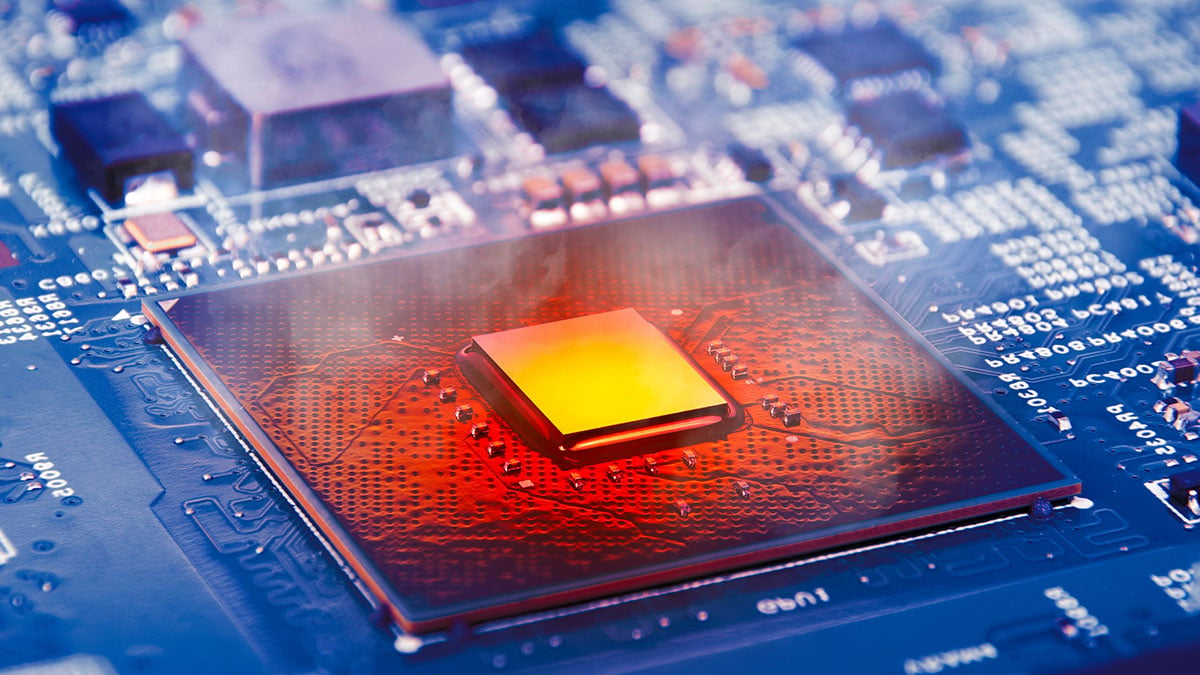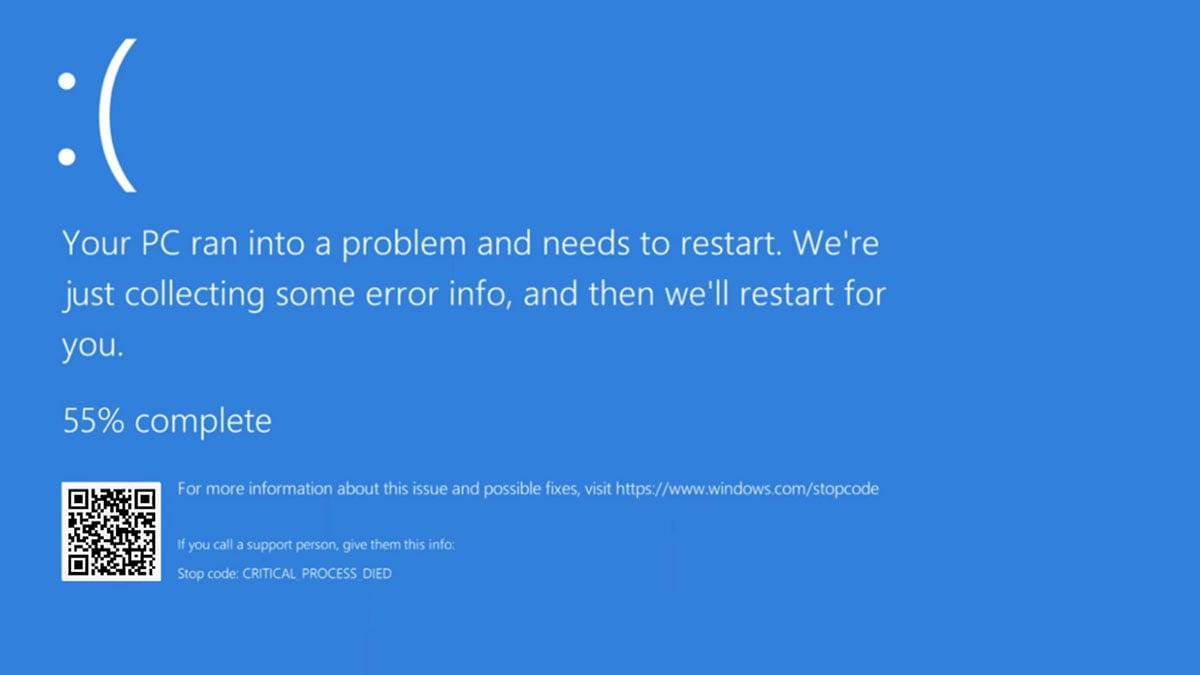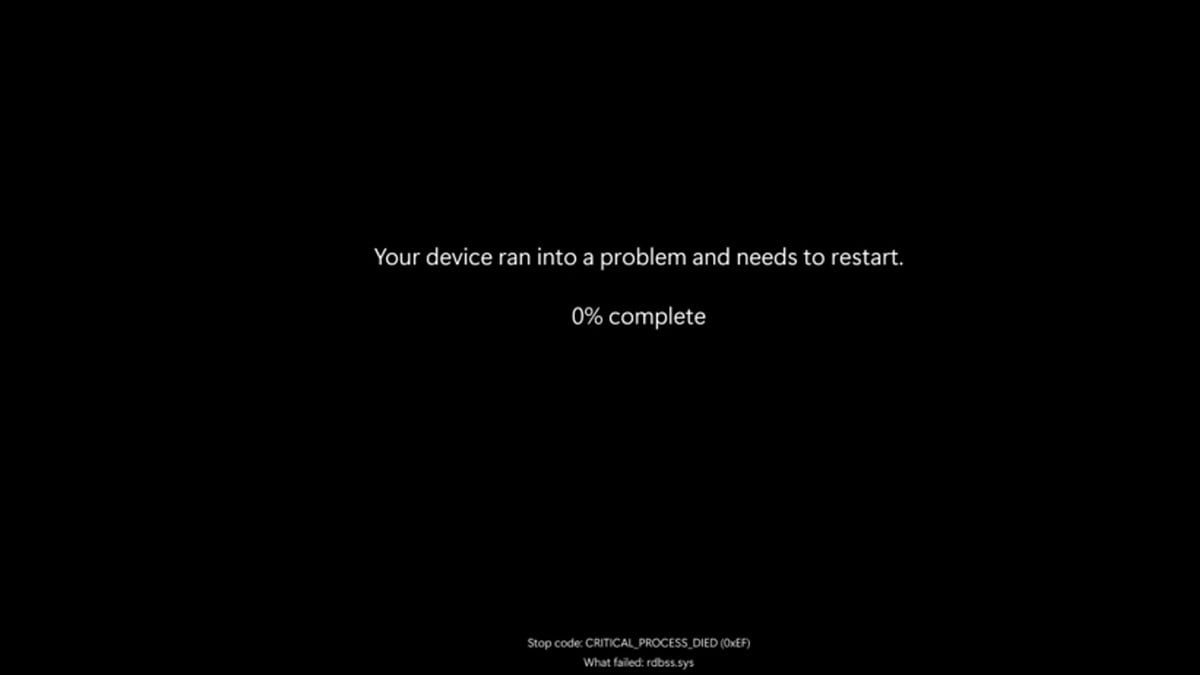
Alas, the dreaded blue screen of death is something that many of us PC users are familiar with. Newsflash! Going forward, when your (not-so) trusty computer crashes, prepare to see the Black Screen of Death. In today’s article we’re going to unearth the truth behind Microsoft’s decision to paint it black, while equipping you with all the info you need to know about the blue SOD, as well as the black SOD. In case you’re confused about the BSOD meaning, it's got nothing to do with turf, but means both Blue, and Black Screen of Death.
Did Microsoft retire the BSOD?
If you missed the memo, or are still using Windows 10, then the answer is yes, Microsoft went ahead and changed the infamous BSOD from blue to black. First spotted in early Windows 11 Insider preview builds, the BSOD was later made official, and is now featured in all Windows 11 24H2 devices.
If you’re seeing the BSOD in blue or black, you may feel that you’ve got more to worry about than the color of the screen. Either way, the Black Screen of Death is here to stay, as part of an aesthetic and functional update in Windows 11. More on that later, first let’s dig deeper and discover what is the Blue Screen of Death!
What is BSOD?
Since the first version of Windows (1.0) in 1985, the Blue Screen of Death has been the stop error screen that appears when Windows encounters a critical system fault that it can’t bounce back from. Also known as a system crash, kernel error, or bug check, the fatal error forces the system to shutdown to prevent any further damage to your PC. In the early days, the BSOD displayed lengthy series of text -sometimes intelligible, other times complete gobbledygook. With the release of Windows 8 back in 2012, the Blue Screen of Death became slightly more relatable, displaying a frowning face emoticon and a simple message.
What causes the BSOD?

The causes of the dreaded BSOD are many, but the most common include:
- Computer Drivers. Drivers are the essential files, mostly provided by hardware manufacturers that allow devices to communicate with your operating system. According to Microsoft, around 70% of crashes are caused by third-party driver code.
- Hardware. Malfunctioning physical components may also be to blame for PC crashes. These commonly include faulty RAM, a failing hard drive or SSD, a malfunctioning motherboard, processor, or even a problematic power supply unit.
- Software. Incompatible or poorly optimized software can lead to system conflicts and a Blue Screen of Death.
- Overheating. If your system overheats from dust buildup, bust cooling fans, or excessive hardware strain it may trigger a BSOD to protect itself from damage.
- Malware. Finally, let’s not forget that viruses or other malicious software that corrupt essential system files or processes can also take you on a trip to the Blue Screen of Death.
And what’s the BSOD for?

Never a welcome sight, the BSOD is actually there to protect your PC and data integrity, providing advanced users with error codes, memory dump info, and a QR code to help you navigate to Microsoft troubleshooting. While most of us will cross our fingers and dutifully restart our computers, advanced users or pros can use the error code to identify the failure, and attempt to fix it.
For example, if the Blue Screen of Death displays: “IRQL_NOT_LESS_OR_EQUAL" this tells us that a driver or system process tried to access a memory address at an inappropriate interrupt request level (IRQL). Likely the issue is caused by a faulty driver, or possibly hardware issues or other software conflict. You can see how BSOD can help IT pros to repair the BSOD by pinpointing the issues causing the crash, ideally with the help of tools such as WinDbg or BlueScreenView.
Black is the new blue?

As you may have gathered from the above paragraphs, the BSOD is now black, and no longer blue, hence the Black Screen of Death. If you’re a Windows 11 user, and your PC crashes, the BSOD will never again be blue, but black forevermore, or until there’s another update in 40 years or so. The BSOD is now a simplified black screen, and Microsoft have dropped the frowning face emoticon and QR code. More similar in appearance to the black screen displayed during a Windows update, the BSOD now lists the stop code and faulty system driver that might not have been displayed during a crash dump.
In case you haven’t yet laid eyes on the Black Screen of Death, it is officially launched this summer on Windows 11 24H2 devices, so be on the lookout! The change is part of a visual, aesthetic update, modernizing the feel and UI/UX of Windows 11. Whether you’re a fan of the old blue, or the new black, the goal behind the new BSOD is for a cohesive feel from startup to shutdown, or (potentially) crash, and the backgrounds are now black.
So why the change?
Without getting into too much detail, it seems that the intention behind the Black Screen of Death is to move away from the scary Screen of Death mentality, and transform it into a screen of recovery. According to the Microsoft Windows Experience Blog, they are "streamlining the unexpected restart experience.” This includes various other features such as quick machine recovery, intended to lessen the disruption of unexpected restarts. While they don’t touch on color choices in the blog post, the focus is on simplifying the UI, and pairing it with a shortened downtime for unexpected restarts. The ultimate goal is to improve readability and alignment with Windows 11 design principles, while still supplying the technical information advanced users require.
Out of the blue and into the black
Well that’s about all we’ve got time for today, we hope that you’re now ready to bravely face the Black Screen of Death, or a bug check, kernel error, or however else you choose to refer to it! Next time you see the “Your device ran into a problem and needs to restart” message, try to frame it as a step on the path to PC recovery, not a step into the screen of death!
Recommended Products








